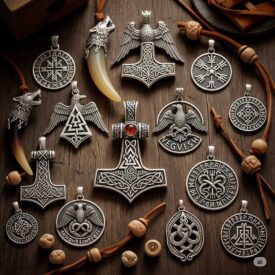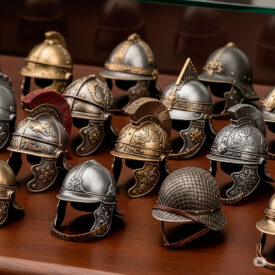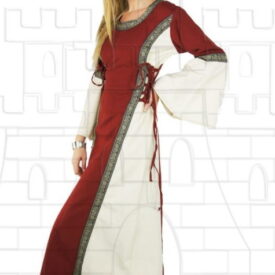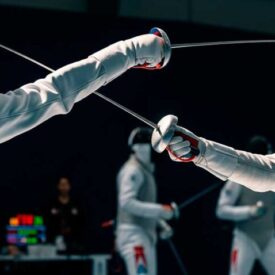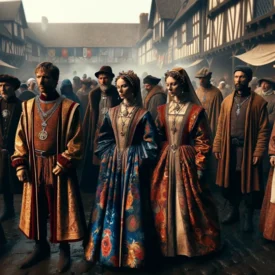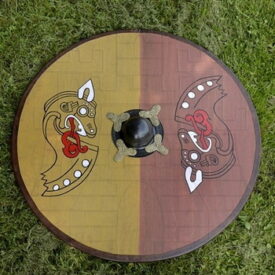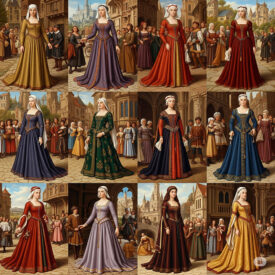Truly, Japanese helmets or kabuto inspire awe and admiration for their beauty and color. Samurai warriors were very brave fighters and impressed not only with their discipline and fighting style, but also with their battle attire, completed by those artistic and striking Japanese helmets. These pieces are much more than simple elements of an armor; they are a fascinating window into the history, art and culture of these legendary warriors.
What is a Japanese Helmet or Kabuto? Beyond the Armor
Kabuto is an essential part of samurai armor, designed primarily to protect the head, considered the most vulnerable and prominent part of the body in Japanese culture. However, its importance went beyond physical protection, reflecting the character, personality, rank and achievements of the samurai in feudal Japanese society. Each Kabuto was made specifically for its wearer, becoming a complex expression of their temperament and often a valuable family heirloom passed down from generation to generation.

A Journey Through Time: The Evolution of the Kabuto
The history of the Kabuto spans several centuries, showing a remarkable transformation from purely functional designs to true works of art. The earliest examples date back to the 5th century, long before the rise of the samurai class.
Primitive Origins (Kofun Period, 250–538 AD)
The earliest Kabuto were simple, with a pronounced central crest, and were constructed by joining iron plates, initially with leather straps and later with rivets. Their design suggests a possible continental origin.
Refinement and Detail (Heian and Kamakura Periods, 794–1333 AD)
During the Heian period, advances in blacksmithing led to more elaborate designs, such as the hoshi kabuto, which incorporated large, pointed rivets as decorative and structural elements. With the growing use of archery, neck guards (shikoro) and flared edges (fukigaeshi) were added to deflect arrows. In the Kamakura era, the Kabuto adopted a more rounded shape, and the frontal decoration, the maedate, became popular, especially in the form of kuwagata (horn-shaped ornaments).
Peak and Battle (Sengoku Period, 1467–1615)
Known as the “age of warring states,” this period saw the zenith of Kabuto design. Sturdy helmets were made, such as the suji kabuto (with linear ridges that deflected blows), to withstand fierce battles while also visually intimidating enemies. It was an era when armor evolved from merely functional to a symbol of status and art.
Art and Status (Edo Era, 1615–1868)
During this period of peace, the Kabuto mainly transformed into a status symbol, reflecting the wealth and power of the samurai. Designs became extravagant and artistic, prioritizing aesthetics over military function. The most luxurious continued to be crafted until shortly after the end of the Edo period, in 1867.
The Anatomy of a Kabuto: Every Piece Tells a Story
A Kabuto is a complex composition of elements, each with both practical and symbolic purpose. It was secured to the head by a cord called the shinobi-no-o that was tied under the chin.
- Hachi: The main dome of the helmet, providing essential protection for the head.
- Shikoro: A series of articulated plates that protected the neck and shoulders, often embellished with brightly colored silk cords.
- Maedate: The frontal ornament, a crucial element to identify the warrior and express his lineage, virtues or loyalties.
- Fukigaeshi: Curved lateral extensions that offered additional protection against sword cuts and helped with balance.
- Mabizashi: A prominent visor that protected against frontal blows and sun glare.
- Wakidate: Lateral ornaments that added distinction and an imposing silhouette to the helmet’s design.
- Tehen (or Hachimanza): A small opening at the top, whose original purpose may have been for the warrior’s hair to pass through, but later served for ventilation. It literally means “seat of Hachiman,” the God of War.
Kabuto were mainly made from iron or steel plates, meticulously joined to provide strength and flexibility. Lacquering techniques and decoration with precious metals turned these helmets into true works of art.
Design Diversity: Types of Kabuto Helmets
Creativity in Kabuto design gave rise to several distinctive styles, each with its own characteristics and purposes.
Suji-bachi Kabuto
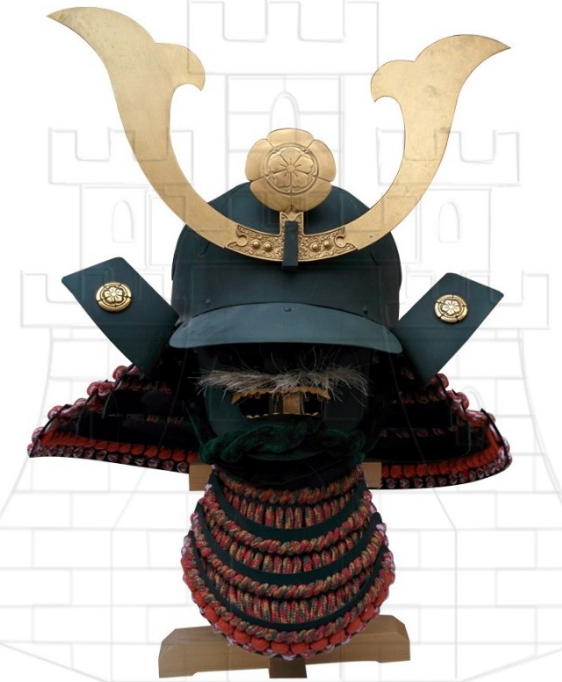
Characterized by its grooves or vertical ridges running across the dome (hachi). These lines not only gave an imposing appearance but also increased the structural strength of the helmet, helping to deflect blows.
Kawari Kabuto
The “extraordinary helmets,” famous for their extravagant and unusual shapes and decorations. They could mimic everyday objects, mythological creatures (like dragons or demons) or even fantastic forms made with papier-mâché and lacquer over a wooden structure. These designs were a bold statement of individuality and status.
Zunari Kabuto
A more practical and minimalist approach, with a shape that fits closely to the head, composed of five plates. Despite its structural simplicity, it was often decorated with elaborate maedate and luxurious finishes.
Momonari Kabuto
With a rounded shape reminiscent of a peach (momo), this European-inspired design was excellent at deflecting projectiles from early firearms and lance blows. It was also associated with longevity and good fortune.
Symbolism and Decoration: The Samurai’s Soul
Kabuto decoration was deeply symbolic, conveying vital information about the wearer, his clan and his beliefs.
Maedate (frontal emblems)
These ornaments ranged from simple metal plates to complex three-dimensional sculptures. Each design had its own meaning, representing the warrior’s virtues, lineage or the protection of deities.
Family Coats of Arms and Clan Symbols (Mon)
 These heraldic emblems were crucial for identification on the battlefield and were placed on various parts of the helmet, especially on the fukigaeshi. Each samurai clan had its distinctive mon.
These heraldic emblems were crucial for identification on the battlefield and were placed on various parts of the helmet, especially on the fukigaeshi. Each samurai clan had its distinctive mon.
Animal and Mythological Motifs
They were very popular for the qualities they wished to convey. Dragons symbolized power and wisdom; deer, longevity; tigers, strength and courage; dragonflies, martial success; and the carp (koi), perseverance. The phoenix, or hou-ou, represented transformation, triumph and rebirth.
The Perfect Combination: Kabuto and Mempo
The Kabuto was rarely worn alone; it was complemented by a Mempo (samurai mask). These masks covered the lower part of the face, offering additional protection and an element of intimidation. Mempo ranged from simple chin protectors to elaborate masks with fierce expressions, often with horsehair moustaches. Their integration with the Kabuto was fundamental, creating a unified ensemble that enhanced both protection and the warrior’s visual presence.
Famous Kabuto that Marked Japan’s History
Some Kabuto are as iconic as the samurai who wore them, reflecting the personality and power of their owners.
Date Masamune’s “Crescent Moon” Kabuto
Distinguished by its large golden asymmetric crescent moon ornament (maedate), it symbolized power and boldness, reflecting the personality of the feared “One-Eyed Dragon”.
Takeda Shingen’s Helmet
Recognizable by its white yak-hair mane and terrifying mask. Its maedate often featured golden horns, projecting an image of ferocity and unwavering leadership.
Oda Nobunaga’s Kabuto
Famous for its aggressive and menacing design, often decorated with his clan’s mon and elements that reflected the fierce personality of this great unifier of Japan.
Tokugawa Ieyasu’s Golden Helmet
A relatively simple Zunari Kabuto in shape, but extraordinarily opulent when covered in gold. It symbolized the immense power and wealth of the founder of the Tokugawa shogunate, the final unifier of Japan.
The Enduring Legacy of the Kabuto Today
Today, Kabuto have transcended their warlike function to become valuable collector’s items and museum exhibits around the world. Their influence extends to modern pop culture, inspiring designs in film, anime, video games and fashion. Additionally, Kabuto retain an important role in traditional Japanese festivals and ceremonies, such as the Jidai Matsuri in Kyoto. In some regions, miniature Kabuto are used in ceremonies for children, symbolizing protection and strength, demonstrating how their cultural meaning has evolved from war to good fortune.
Samurai were warriors wrapped in mystique reflected in the beauty and artistry of their helmets. These helmets not only protected but told stories of power, ambition and Japanese martial art, embodying values of honor, craftsmanship and beauty that still resonate in our society. Explore the majesty of these historic pieces and find the replica that connects with your warrior spirit.

